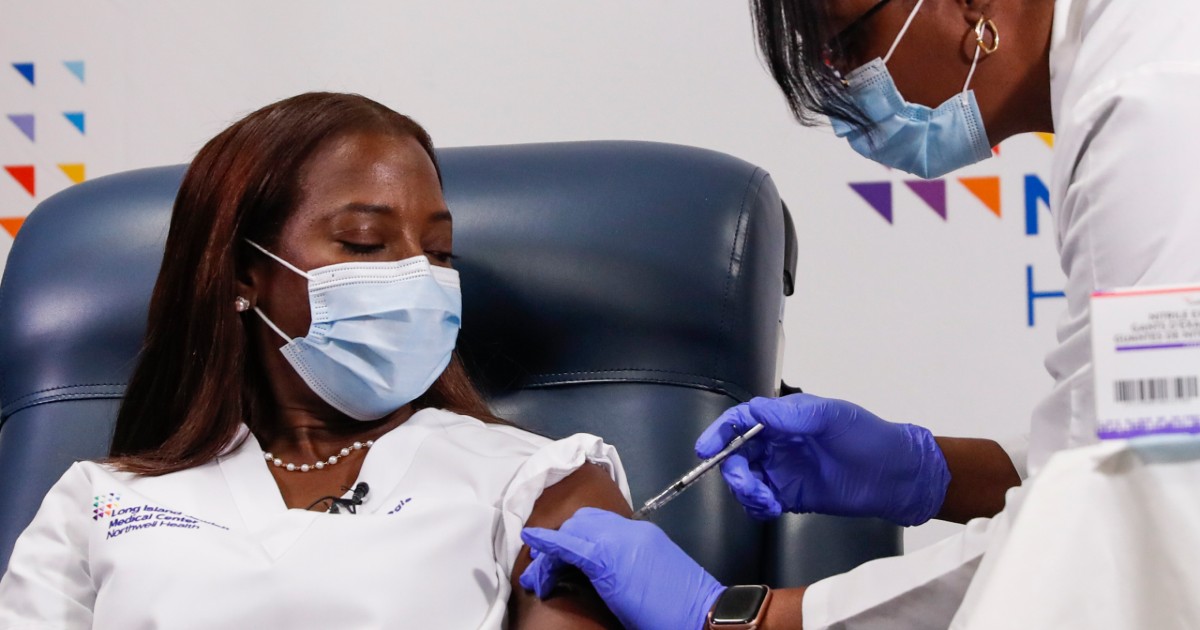There are four main types of vaccines currently approved, in approval or being considered in the MENA region in its fight against COVID-19.

Credit: Shannon Stapleton/Getty Images
Over the past month, a number of COVID-19 vaccines have been approved for general or emergency use in the Middle East and North Africa (MENA). Understandably, there remains confusion over which one to choose – for example, should it be based on technology? On which one has the most advantages? Or simply on the one a country’s government chooses?
We’re not here to tell you which type of vaccine to choose - that is, and should be, your own choice. However, what we can agree on is that all vaccines work by exposing the human body to particles or molecules that trigger an immune response, thus protecting the subject from future infection. The key difference between the four main types of vaccines is the method of exposure used.
Here are the key differences.
1) WHOLE VIRUS VACCINE
Vaccines include: Sinopharm, Sinovac
Number of doses required: 2 doses, intramuscular
Other licensed vaccines that use this type of technology: Hepatitis A, polio, rabies (all inactivated type)
What to know: The whole virus vaccine uses a weakened or deactivated form of the pathogen that causes COVID-19 to trigger protective immunity to it.
The two vaccines mentioned above – Sinopharm and Sinovac – both use inactivated pathogens, therefore they cannot infect cells and replicate, but can trigger an immune response.
Benefits: According to Gavi, the Vaccine Alliance (GAVI), the advantages of an inactivated whole virus vaccine include the fact its technology is well established, it is suitable for people with compromised immune systems, and it’s relatively simple to manufacture.
Challenges: Booster shots may be required.
2) RNA or mRNA VACCINE
Vaccines include: Pfizer-BioNTech, Moderna
Number of doses required: 2 doses, intramuscular
Other licensed vaccines that use this type of technology: None
What to know: Since no other existing licensed or approved vaccine uses this type of technology, the Messenger RNA (mRNA) variety could be mistaken for something completely new to healthcare. However, a number of mRNA vaccines have been studied in the past for illnesses and diseases including cytomegalovirus (CMV), influenza, rabies, and the Zika virus.
According to the Centers for Disease Control and Prevention (CDC): “Researchers have been studying and working with mRNA vaccines for decades. Interest has grown in these vaccines because they can be developed in a laboratory using readily available materials. This means the process can be standardised and scaled up, making vaccine development faster than traditional methods of making vaccines.”
So how does it reportedly work? The COVID-19 RNA vaccine consists of mRNA molecules made in a lab that code for parts of the SARS-CoV-2 virus – specifically the virus’ spike protein.
Once injected into the body, the mRNA instructs the cells to produce antigens – such as the spike protein mentioned – which are then detected by immune cells, triggering a response by the body’s lymphocytes.
The killer T-cells destroy the infected cells, while the B-cells and helper T-cells support antibody production. Whoever is exposed to the COVID-19 coronavirus in the future would have an immune system that recognises it, and in turn fight off the infection.
Benefits: According to the University of Cambridge’s PHG Foundation, advantages include good safety (since there are no live components, there’s no risk of the vaccine triggering disease), reliability, and that it’s relatively simple to manufacture.
Challenges: Disadvantages include unintended effects (such as an unintended immune reaction), ensuring effective delivery into the body (since free RNA in the body is quickly broken down), storage issues, plus the fact that this type of vaccine has never previously been licensed for humans.
3) NON-REPLICATING VIRAL VECTOR
Vaccines include: Oxford-AstraZeneca, Sputnik V (Gamaleya Research Institute)
Number of doses required: 2 doses, intramuscular
Other licensed vaccines that use this type of technology: Ebola
What to know: This type of vaccine introduces a safe, modified version of the virus – known as “the vector” – to deliver genetic code for the antigen. In a COVID-19 vaccine, the “vector” is the spike proteins found on the surface of the coronavirus.
Once the body’s cells are “infected”, the cells are instructed to produce a large amount of antigens, which in turn trigger an immune response.
Benefits: Viral vector-based vaccination is another well-established technology that can trigger a strong immune response as it also involves both B cells and T cells.
Challenges: Previous exposure to the vector could reduce effectiveness, plus these types of vaccines are relatively complex to manufacture compared to others.
4) PROTEIN SUBUNIT
Vaccines include: Novavax
Number of doses required: 2 doses, intramuscular
Other licensed vaccines that use this type of technology: Hepatitis B, meningococcal disease, pneumococcal disease, shingles
What to know: The protein subunit vaccine contains purified “pieces” of a pathogen rather than the whole pathogen to trigger an immune response. It is thought that by restricting the immune system to the whole pathogen, the risk of side effects is minimised.
Benefits: The protein subunit vaccination is also a well-established technology that’s advantageous for those with compromised immune systems.
Challenges: This type of vaccine is relatively complex to manufacture, and adjuvants and booster shots may be required.
Editor’s note: Information is accurate at time of publishing; however, given the ongoing updates in research – plus possible changes in governmental decisions – the availability and reliability of these vaccines is subject to change at any time.
READ MORE: The COVID-19 vaccines currently being administered, or considered, in the MENA region
https://www.healthcareitnews.com/news/emea/four-types-covid-19-vaccine-snapshot